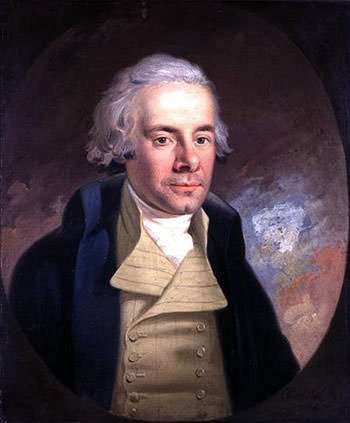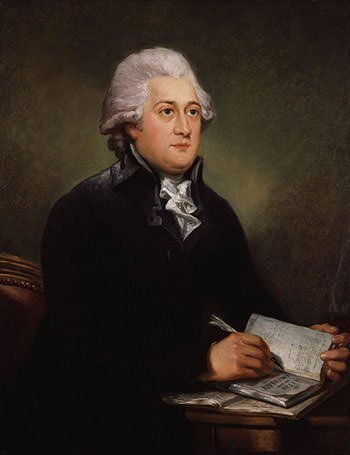William Wilberforce is famous for leading the parliamentary campaign for twenty six years which led to abolition of slave trade in British Empire. His continuous efforts were also instrumental in slavery being abolished in Britain a few months after his death. Here are 10 interesting facts about the life and achievements of William Wilberforce.
#1 HIS GRANDFATHER SERVED AS MAYOR OF HULL TWICE
Born on 24 August 1759 in Hull, England, William Wilberforce was the only son of Robert Wilberforce, a wealthy merchant, and his wife Elizabeth Bird. He was named after his grandfather William, who had made the family fortune in maritime trade and had been elected mayor of Hull twice. Wilberforce lost his father when he was nine years old and was sent to live with his aunt and uncle. It was through his relatives that William first became interested in Evangelical Christianity

#2 HE BECAME A MEMBER OF PARLIAMENT WHILE HE WAS A STUDENT
William joined the Cambridge University in 1776 at the age of seventeen. He was a popular figure at Cambridge and enjoyed gambling and late night drinking sessions. It was here that Wilberforce formed a strong friendship with William Pitt the Younger who would go on to become the youngest prime minister of Great Britain in 1783 at the age of 24. Encouraged by Pitt, William joined politics and was elected to Parliament from Hull in 1780 at the age of twenty-one and while still a student.

#3 HE LET GO OF HIS EARLIER LIFESTYLE AND BECAME DEEPLY RELIGIOUS
William Wilberforce’s spiritual journey began in 1785 at a time when England was experiencing a powerful religious revival. He was deeply impacted after reading The Rise and Progress of Religion in the Soul by Philip Doddridge, a 18th century English Nonconformist leader. Wilberforce regretted his previous hedonistic lifestyle and became committed to dedicate his future life to the service of God. The same year he converted to Evangelical Christianity.

#4 He BECAME AWARE OF THE PLIGHT OF SLAVES THROUGH JAMES RAMSAY
British were involved in the Atlantic slave trade since the 16th century. Slaves were bought in Africa and transported to West Indies. Due to appalling conditions a high percentage died during the voyage. Rev. James Ramsay, a ship’s surgeon who became a clergyman, had witnessed the inhumane conditions which the slaves were subjected to. In 1783, Ramsay met Wilberforce and gave him an account of the plight of the slaves. After his religious transformation a few years later, William decided to work towards improving the situation.
#5 HE Collaborated With Abolitionist Thomas Clarkson
Abolitionism was a movement in the late 18th and early 19th centuries which aimed at bringing an end to the practice of slavery. In early 1787, Wilberforce met with abolitionist Thomas Clarkson which began a collaboration which would last nearly 50 years. Wilberforce agreed to lead a parliamentary campaign to abolish the slave trade. In May, Clarkson along with 11 other abolitionists formed the Society for Effecting the Abolition of the Slave Trade. Wilberforce was informally involved initially but joined the committee in 1791.

#6 He INTRODUCED THE FIRST BILL TO ABOLISH SLAVE TRADE IN BRITISH PARLIAMENT IN 1791
While Clarkson travelled, researched and mobilized the public against the slave trade, Wilberforce became the leader of the cause in Parliament. In 1791, he introduced the first Bill to abolish the slave trade which was defeated by 163 votes to 88. Clarkson continuously provided Wilberforce information about the slave trade and Wilberforce began a parliamentary campaign during which he introduced a motion in favour of abolition almost every year.

#7 He WAS VERY INFLUENTIAL IN THE ABOLITION OF THE SLAVE TRADE
Abolishment of slave trade became a major issue in the general election in U.K. in 1806. Wilberforce wrote and published a 400 page letter titled A Letter on the Abolition of the Slave Trade. This was an integral part of the final phase of the campaign. Many abolitionist MPs entered the House of Commons. Abolition Bill was first introduced in House of Lords as PM William Grenville wanted it to pass the sterner test first. The bill was passed in House of Lords by a large margin. In the House of Commons the bill was carried by 283 votes to 16 during which tributes poured to Wilberforce whose face was streamed with tears.

#8 HIS EFFORTS MADE POSSIBLE THE SLAVERY ABOLITION ACT OF 1833
The Slave Trade Act which abolished the slave trade in the British Empire was passed on 25 March 1807, but this didn’t free those who were already slaves. Wilberforce continued to work for the complete abolition of slavery though he was hindered by poor health. In April 1833, he gave his final anti-slavery speech. Wilberforce died on 29 July 1833. About a month later the Slavery Abolition Act was passed abolishing slavery throughout the British Empire with a few exceptions.

#9 HE WAS A LEADING MEMBER OF THE CLAPHAM SECT
Wilberforce was an influential member of the Clapham Sect which contained powerful Evangelical Christians who worked towards abolition of the slave trade, liberation of slaves and reform of the penal system. The group’s name originates from those attending Holy Trinity Church on Clapham Common, an area south-west of London. The Clapham Sect is credited with substantially influencing the moral views of people of the time through their writings, societies, philanthropy and campaigns, especially against slavery.

#10 WILBERFORCE MARRIED BARBARA ANN SPOONER
Wilberforce married Barbara Ann Spooner on 30 May 1797. He had six children with her. Apart from anti-slavery, he participated in several other campaigns including Society for the Suppression of Vice. He was the founder of the Royal Society for the Prevention of Cruelty to Animals. His contribution in abolishing slavery has been commemorated in UK and elsewhere. A statue built in his honour stands in the grounds of Hull College and Wilberforce University in Ohio, U.S. has been named after him.


on being asked to write an article on seminal moments, my thoughts turned to Wilberforce and his group of determined and strong men. May there be more like him.
this historic information what all that I needed, it was very succinct
bell.
thank you
You’re welcome.
William Wilberforce has been an inspiration of mine for me since childhood. I was born in Hull and thus, as is usual, learned at school about local figures of note, past and present.
For various reasons, when I was 21 I became a pacifist and by that time was reading intensely & prolifically about the peoples of the World and the history of the British Empire, the Church, various religions and various political systems and their impacts on the life of people.
Over the years I have become a strong advocate for a peace, social justice and human rights. However I am just a little person with no particular claim to fame so I can’t say that I expect my actions to have had any signficance in bringing about change.
I read this particular article today, coincidentally after just reading a Freedom United article about current slavery. It is a sad fact that some 200 years on from Wilberforce’s long campaign to have slavery abolished across the British Empire and 150 years since the American Civil War was fought and won with a similar aim, there are estimated to be around 40,000,000 people in slavery around the World TODAY.
I don’t know how we change that. The current World leaders, even in the so-called ‘Free World’ seem to put profit before people and often support, fund and supply some of the regimes in the World most guilty of human rights abuses, including slavery.
I guess that all that can be done is to follow the model of Wilberforce, Lincoln and others and use their dedication, determination, patience, resilience and compassion as an inspiration to continue to call out and oppose the cruelty of enslavement, wherever and in whatever guise.
Thank you for the article.
I plan to use this presentation in my professional studies. Thank you